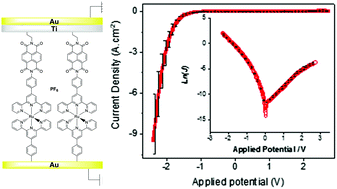Electrografted monolayer based on a naphthalene diimide–ruthenium terpyridine complex dyad: efficient creation of large-area molecular junctions with high current densities†
Abstract
An electron donor–acceptor dyad has been designed for the creation of large-area molecular junctions (MJ). Diazonium cation electrografting was used to form well controlled monolayers. The robustness of the monolayer enabled the creation of MJs using direct top-coat evaporation with a high yield of operating devices.



 Please wait while we load your content...
Please wait while we load your content...